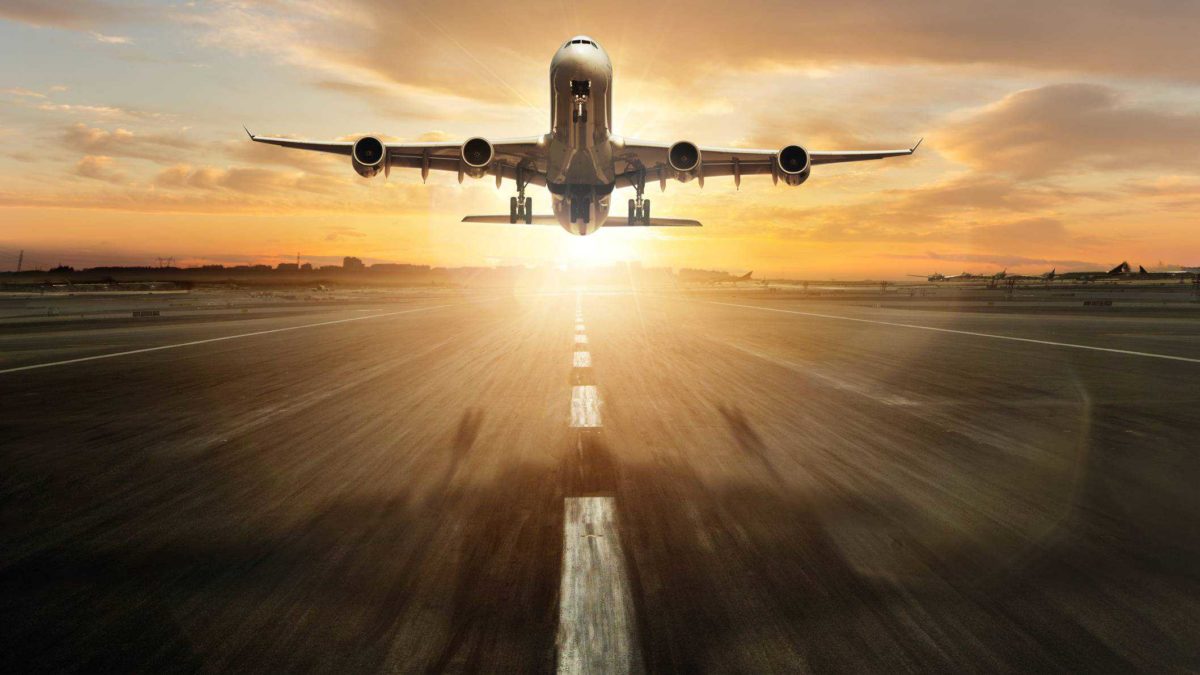The travel industry was arguably the first to feel the heat of the COVID-19 crisis and looks likely to be the last to recover.
But the rollout of vaccines is offering new hope to ASX travel shares. Travel bookings have been at all-time lows during the pandemic, with shifting border restrictions making leisure travellers fearful of committing.
The vaccines potentially signify the beginning of the end of the pandemic, and the start of freer movement across borders. This should result in more opportunity to travel for pent up consumers.
ASX travel shares bore the brunt of the sudden downturn in travel, with travel share prices plunging at the start of the pandemic.
The Qantas Airways Limited (ASX: QAN) share price fell 63% between February and March last year. The Webjet Limited (ASX: WEB) share price fell 72% over the same period while the Flight Centre Travel Group Ltd (ASX: FLT) share price fell 73%.
It's now been a year since travel bans started to bite and hope is on the horizon for a return to more normal conditions. Let's take a look at how ASX travel shares are travelling right now.
Qantas
The Qantas share price is up 100% from its low in March 2020 but remains 27% below its February 2020 high.
The airline was hit hard by COVID restrictions, reporting a 91% decrease in underlying profits in FY20. This resulted in a statutory loss of $2.7 billion.
Qantas expects to begin the balance sheet repair process in the second half of FY21 as the airline moves into recovery mode. This will be assisted by the impact of domestic border re-openings, progress on cost reduction programs, and the continued strong performance of loyalty and freight divisions.
Qantas has advised it will post a statutory loss in FY21, but expects to be close to break even at the underlying earnings before interest, tax, depreciation and amortisation (EBITDA) level for the first half.
The airline has maintained strong liquidity throughout the crisis to protect against any additional, unexpected shocks. As at 30 November 2020, Qantas had $3.6 billion in available liquidity. This consisted of $2.6 billion in cash and a $1 billion undrawn revolving credit facility.
Qantas expected to increase this facility by $500 million before 31 December 2020 to provide additional standby liquidity. In a sign that the airline may be expecting greater travel in future, Qantas earlier this month signed a lease agreement with Alliance Aviation Services Limited (ASX: AQZ) for the provision of E190 aircraft. The agreement initially provides for three E190 aircraft to commence operations in mid-2021 with options to call on an additional 11 aircraft based on market conditions.
Webjet
Webjet reported its half-year results last week which demonstrated the continued impact of COVID-19 on the travel industry.
Total transaction volumes were $267 million, an 89% decrease compared to 1H FY20. This flowed through to a 90% drop in revenue, which was $22.6 million in 1H FY21 compared to $217.8 million in the prior corresponding period.
EBITDA was a negative $40.1 million, down from $87.3 million in 1H FY20. "These results reflect the devastating impact COVID-19 continues to have on the global travel industry," managing director John Guscic said.
The Webjet share price is up 116% from last year's low, but remains around 45% below pre-COVID highs.
For the travel operator, the focus continues to be on managing cash burn and cost reduction initiatives. The company says significant cost reduction initiatives are creating leverage for when travel markets reopen. These initiatives are expected to deliver 20% lower costs across the Webjet group when the business returns to scale. Webjet is also seeking capitalise on domestic leisure market opportunities.
Webjet reported a statutory loss of $132 million for 1H FY21, with an underlying loss of $50 million. Trading for the rest of FY21 is expected to be in line with the first half.
Guscic says demand for travel remains high: "We believe people will want to travel as soon as they are able to and we are doing everything we can to ensure Webjet is there to capture demand when it happens."
Webjet is looking to capitalise on this eventual travel recovery, which is expected to be led by domestic and leisure markets.
Flight Centre
Flight Centre is due to release its half-year results this week, and with borders still in a state of flux, they might not be pretty.
The Flight Centre share price is up 74% from its March 2020 low, but is still trading well below pre-COVID levels, when shares were changing hands for closer to $40. As a result of the share price fall, Flight Centre was removed from the S&P/ASX 100 (ASX: XTO) in December. The travel operator reported a $510 million underlying loss for FY20, compared to a $343 profit in FY19. The loss was incurred entirely during the March–June period, which Flight Centre called "the most challenging trading environment the company has experienced".
Flight Centre entered the crisis with healthy cash reserves and minimal debt. It moved quickly to buffer itself when trading conditions deteriorated by securing additional cash and liquidity. It raised $700 million in capital in April 2020 and sold its Melbourne property for more than $62 million in July.
Cost reductions were implemented via store rationalisations and global workforce reductions. This saw Flight Centre close some 50% of leisure shops globally. 70% of employees were placed on redundancy, stand-down or furlough programs. By August Flight Centre advised its cost base could service 40% of normal transaction volume, which is likely to represent a break-even position.
Can ASX travel shares stage a comeback?
ASX travel shares have spent the past year under the cloud of COVID-19 and the unprecedented disruption it wrought. Now that hope has arrived in the form of a vaccine, we could start to see a return to better conditions for travel industry participants.
Although leisure travel is likely to be limited to domestic travel for the next year or so, demand from pent up travel consumers is growing. This could point to the start of a recovery for ASX travel shares.









